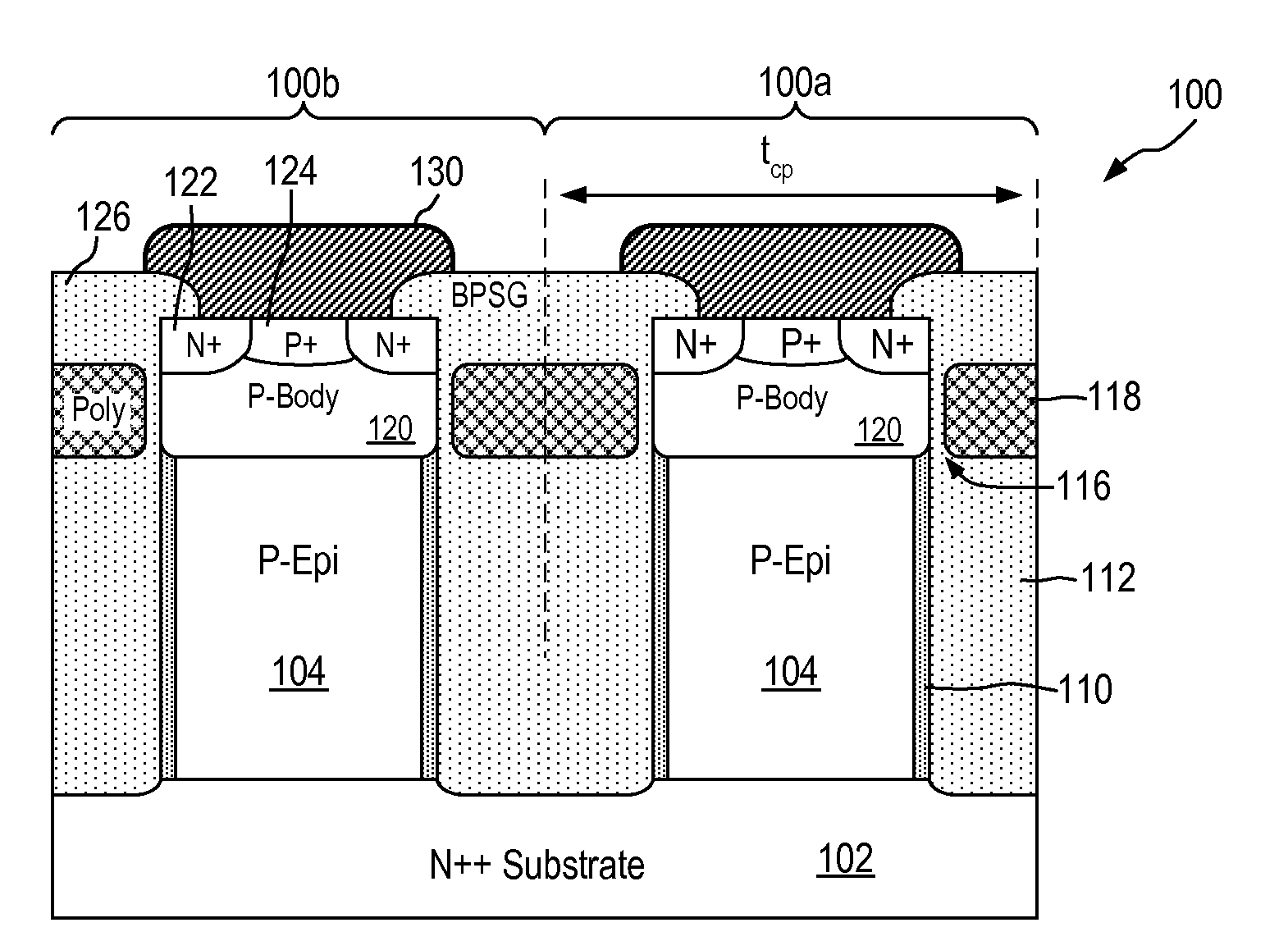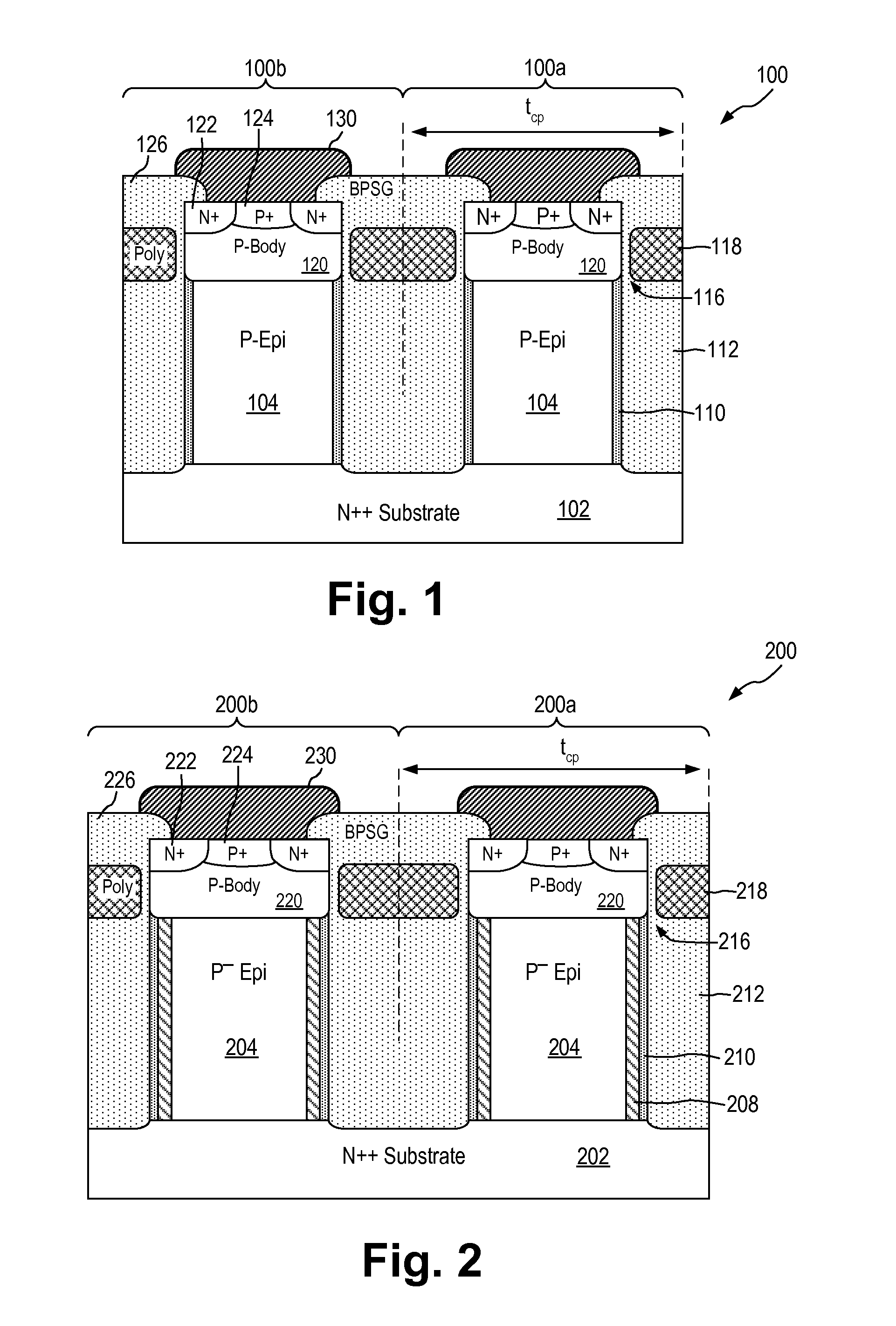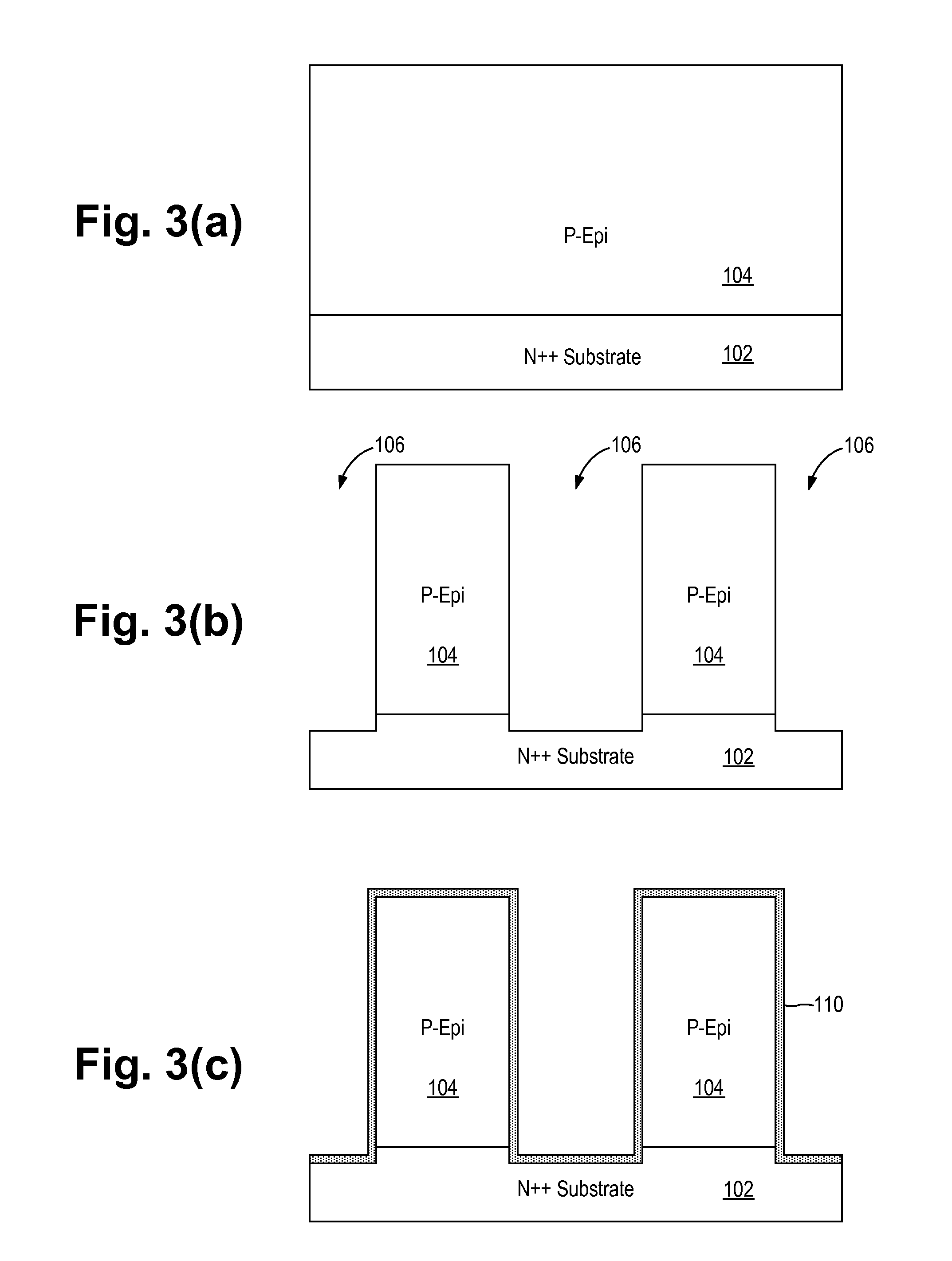Nanotube Semiconductor Devices
a technology of semiconductor devices and mosfets, which is applied in semiconductor devices, diodes, electrical equipment, etc., can solve the problems of slow switching speed of sgt, complex and expensive sgt process, and reduced sgt switching speed, so as to achieve uniform doping concentration and charge balance in operation
- Summary
- Abstract
- Description
- Claims
- Application Information
AI Technical Summary
Benefits of technology
Problems solved by technology
Method used
Image
Examples
first embodiment
[0051]FIG. 1 is a cross-sectional view of a vertical trench MOSFET device according to the present invention. Referring to FIG. 1, an N-type vertical trench MOSFET device (“NMOS transistor”) 100 is formed in an array of parallely connected transistor cells 101a and 101b. A desired number of transistor cells are used to form the array to realize an NMOS transistor 100 having the desired breakdown voltage and Rdson (drain-to-source “On” resistance) characteristic. The transistor array can be a 1-dimensional or 2-dimensional array depending on the number of transistor cells involved. For instance, a stripe cell structure can be used for a 1-dimensional array and a hexagonal cell structure can be used for a 2-dimensional array, as will be described in more detail below.
[0052]NMOS transistor 100 is formed on a very heavily doped N++ substrate 102. N++ substrate 102 serves as the drain electrode of the transistor. Oxide-filled trenches 112 are formed in a P-type epitaxial (P-Mesa-Epi) lay...
second embodiment
[0064]FIG. 2 is a cross-sectional view of a vertical trench MOSFET device according to the present invention. Referring to FIG. 2, an N-type vertical trench MOSFET device (“NMOS transistor”) 200 is formed in an array of parallely connected transistor cells 201a and 201b. A desired number of transistor cells are used to form the array to realize an NMOS transistor 200 having the desired breakdown voltage characteristic. The transistor array can be a 1-dimensional or 2-dimensional array depending on the number of transistor cells involved.
[0065]NMOS transistor 200 has the same structure as NMOS transistor 100 of FIG. 1 except for an additional thin P-type epitaxial (P-Epi) layer 208 formed adjacent to the thin N-Epi layer 210. The N-Epi layer 210 and P-Epi layer 208 forming a “double nanotube” structure. Furthermore, the P-type epitaxial layer 204 in which the transistor cells are formed is very lightly doped P-type epitaxial layer, denoted “P− Mesa Epi” in FIG. 2. The thin P-Epi laye...
PUM
 Login to View More
Login to View More Abstract
Description
Claims
Application Information
 Login to View More
Login to View More - R&D
- Intellectual Property
- Life Sciences
- Materials
- Tech Scout
- Unparalleled Data Quality
- Higher Quality Content
- 60% Fewer Hallucinations
Browse by: Latest US Patents, China's latest patents, Technical Efficacy Thesaurus, Application Domain, Technology Topic, Popular Technical Reports.
© 2025 PatSnap. All rights reserved.Legal|Privacy policy|Modern Slavery Act Transparency Statement|Sitemap|About US| Contact US: help@patsnap.com



